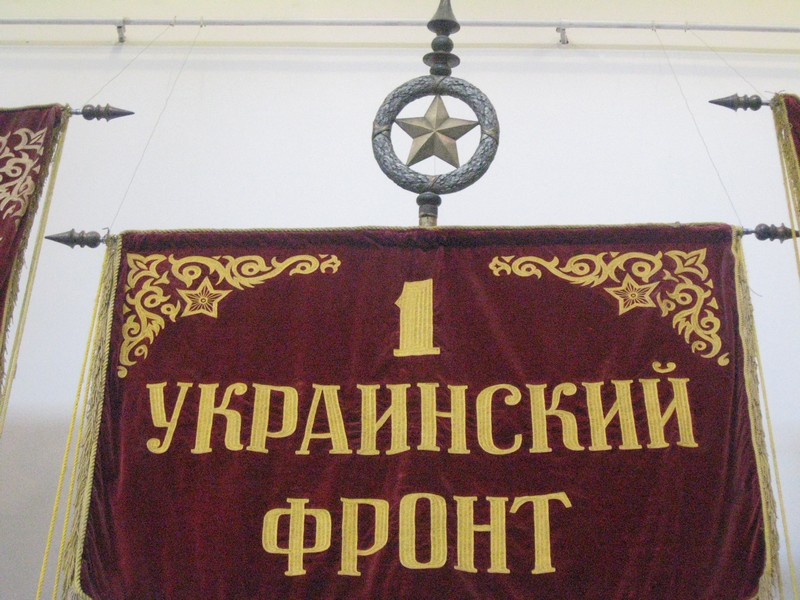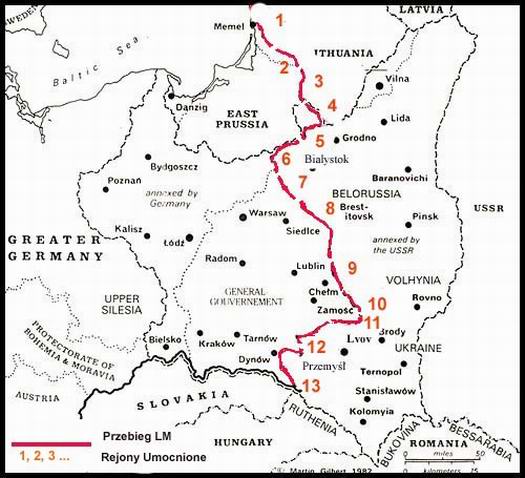|
294th Rifle Division (Soviet Union)
The 294th Rifle Division () was an infantry division of the Soviet Union's Red Army during World War II. Formed in the summer of 1941, the 294th fought in the Leningrad area until May 1943. The division served with the 52nd Army for most of the rest of the war until its redesignation in the summer of 1945. History The 294th began forming on 10 July 1941 at Lipetsk, part of the Orel Military District. Its basic order of battle included the 857th, 859th, and 861st Rifle Regiments, as well as the 849th Artillery Regiment and the 565th Sapper Battalion. After spending two months forming, the division was sent north to the Leningrad Front's 54th Army in late September. The 294th held positions east of the city in the Volkhov River area until May 1942 as part of the 8th Army or the 54th Army. In May 1943, the 294th was transferred to the 52nd Army in the Reserve of the Supreme High Command. It would remain part of the 52nd Army for most of the rest of the war. In August, the ... [...More Info...] [...Related Items...] OR: [Wikipedia] [Google] [Baidu] |
Soviet Union
The Soviet Union,. officially the Union of Soviet Socialist Republics. (USSR),. was a transcontinental country that spanned much of Eurasia from 1922 to 1991. A flagship communist state, it was nominally a federal union of fifteen national republics; in practice, both its government and its economy were highly centralized until its final years. It was a one-party state governed by the Communist Party of the Soviet Union, with the city of Moscow serving as its capital as well as that of its largest and most populous republic: the Russian SFSR. Other major cities included Leningrad (Russian SFSR), Kiev (Ukrainian SSR), Minsk ( Byelorussian SSR), Tashkent (Uzbek SSR), Alma-Ata (Kazakh SSR), and Novosibirsk (Russian SFSR). It was the largest country in the world, covering over and spanning eleven time zones. The country's roots lay in the October Revolution of 1917, when the Bolsheviks, under the leadership of Vladimir Lenin, overthrew the Russian Provisional Government ... [...More Info...] [...Related Items...] OR: [Wikipedia] [Google] [Baidu] |
Reserve Of The Supreme High Command
The Reserve of the Supreme High Command (Russian: Резерв Верховного Главнокомандования; also known as the '' Stavka'' Reserve or RVGK ( ru , РВГК)) comprises reserve military formations and units; the Stavka Reserve acted as the principal military reserve of the Soviet Red Army during World War II, and the RVGK now operate as part of the Russian Armed Forces under the control of the Supreme Commander-in-Chief of the Russian Armed Forces ( ru , Верховный главнокомандующий) - the President of the Russian Federation. History World War II Forces from the Reserve were assigned by the '' Stavka'' (Supreme High Command) to individual '' fronts'' (army groups) that were conducting major operations. These formations were designed to support any forms of operations but especially penetrations and exploitations in accordance with the Soviet deep battle doctrine. Beginning in 1943, the formations and units in the Rese ... [...More Info...] [...Related Items...] OR: [Wikipedia] [Google] [Baidu] |
Military Units And Formations Established In 1941
A military, also known collectively as armed forces, is a heavily armed, highly organized force primarily intended for warfare. It is typically authorized and maintained by a sovereign state, with its members identifiable by their distinct military uniform. It may consist of one or more military branches such as an army, navy, air force, space force, marines, or coast guard. The main task of the military is usually defined as defence of the state and its interests against external armed threats. In broad usage, the terms ''armed forces'' and ''military'' are often treated as synonymous, although in technical usage a distinction is sometimes made in which a country's armed forces may include both its military and other paramilitary forces. There are various forms of irregular military forces, not belonging to a recognized state; though they share many attributes with regular military forces, they are less often referred to as simply ''military''. A nation's military may f ... [...More Info...] [...Related Items...] OR: [Wikipedia] [Google] [Baidu] |
Infantry Divisions Of The Soviet Union In World War II
Infantry is a military specialization which engages in ground combat on foot. Infantry generally consists of light infantry, mountain infantry, motorized infantry & mechanized infantry, airborne infantry, air assault infantry, and marine infantry. Although disused in modern times, heavy infantry also commonly made up the bulk of many historic armies. Infantry, cavalry, and artillery have traditionally made up the core of the combat arms professions of various armies, with the infantry almost always comprising the largest portion of these forces. Etymology and terminology In English, use of the term ''infantry'' began about the 1570s, describing soldiers who march and fight on foot. The word derives from Middle French ''infanterie'', from older Italian (also Spanish) ''infanteria'' (foot soldiers too inexperienced for cavalry), from Latin '' īnfāns'' (without speech, newborn, foolish), from which English also gets '' infant''. The individual-soldier term ''infantry ... [...More Info...] [...Related Items...] OR: [Wikipedia] [Google] [Baidu] |
24th Rifle Division (Soviet Union) , formerly the 24th Rifle Division
{{mil-unit-dis ...
24th Rifle Division can refer to: * 42nd Guards Motor Rifle Division, formerly the 24th Guards Rifle Division * 24th Mechanized Brigade (Ukraine) , image = 24 ОМБр.svg , caption = 24th Mechanized Brigade shoulder sleeve patch , dates = 26 July 1918 – present , country = Soviet Russia (1918–1928)(1928–1991)(1991present) , allegiance ... [...More Info...] [...Related Items...] OR: [Wikipedia] [Google] [Baidu] |
Yavoriv
Yavoriv ( uk, Яворів, ; pl, Jaworów; yi, יאַוואָראָוו , translit=Yavorov; german: Jaworiw) is a city in the Lviv region of western Ukraine which is around 15 kilometers from the Polish border. It is the administrative centre of Yavoriv Raion and is situated approximately west of the oblast capital, Lviv. Yavoriv hosts the administration of Yavoriv urban hromada, one of the hromadas of Ukraine. Its population is approximately . Not far from it is the watering-place of Shklo with sulphur springs. History The town was first mentioned in written documents in 1436. It received Magdeburg rights in 1569, from Polish King Sigismund II Augustus. Jaworów was a royal town of Poland. It was a favorite residence of king John III Sobieski. In 1675 John III signed the Polish-French Treaty of Jaworów in the town, and there he also received the congratulations from the Pope on his success against the Turks at Vienna (1683), and ratified the formation of the Holy League a ... [...More Info...] [...Related Items...] OR: [Wikipedia] [Google] [Baidu] |
6th Army (Soviet Union)
The 6th Army is a field army of the Red Army and the Soviet Army that was active with the Russian Ground Forces until 1998. It appears to have been reformed in 2010 as the 6th Combined Arms Army. It was first formed in August, 1939 in the Kiev Special Military District from the Volochiskaya Army Group (a corps-sized formation). First Formation In September 1939 it participated in the Soviet invasion of Poland. At the beginning of war the Army (6th Rifle Corps, 37th Rifle Corps (which included the 80th, 139th, and 141st Rifle Divisions), 4th and 15th Mechanized Corps, 5th Cavalry Corps, 4th Fortified Region, and 6th Fortified Region (Rava-Ruska), and a number of artillery and other units) was deployed on the Lviv direction. It started the Great Patriotic War as part of the Southwestern Front. The army's headquarters was disbanded 10 August 1941 after the Battle of Uman. In this battle, the 6th Army was caught in a huge encirclement south of Kiev along with the 12th Army. ... [...More Info...] [...Related Items...] OR: [Wikipedia] [Google] [Baidu] |
1st Ukrainian Front
The 1st Ukrainian Front (Russian: Пéрвый Украи́нский фронт), previously the Voronezh Front (Russian: Воронежский Фронт) was a major formation of the Soviet Army during World War II, being equivalent to a Western army group. Background During the first months of the war, officers from 16 regions of Ukraine conscripted about 2.5 million people from military enlistment offices. 1.3 million militiamen from the left-bank and southern regions of Ukraine fought against the enemy. In 1941, about 3.185 million citizens of the Ukrainian SSR were sent to the Soviet Red Army and Navy. Replenishing mostly the units of the Southern and Southwestern fronts, the Ukrainian people formed the basis of the 37th, 38th, and 40th armies; and the 13th and 17th rifle divisions. Due to the conscription of civilians, the proportion of Ukrainian citizens fighting in south-west Ukraine reached 50%. This significantly exceeded the percentage of Ukrainians from t ... [...More Info...] [...Related Items...] OR: [Wikipedia] [Google] [Baidu] |
2nd Ukrainian Front
The 2nd Ukrainian Front (2-й Украинский фронт), was a front of the Red Army during the Second World War. History On October 20, 1943 the Steppe Front was renamed the 2nd Ukrainian Front. During the Second Jassy–Kishinev Offensive, 2nd Ukrainian Front, led by Army General Rodion Malinovsky, comprised: * 6th Guards Tank Army – Major General A.G. Kravchenko * 4th Guards Army – Ivan Galanin * 7th Guards Army – Lieutenant General M.S. Shumilov * 27th Army – Lieutenant General S.G. Trofimenko * 40th Army – Lieutenant General Filipp Zhmachenko * 52nd Army – Lieutenant General K.A. Koroteev * 53rd Army – Lieutenant General Ivan Managarov * 18th Tank Corps – Major General V.I. Polozkov * Cavalry-Mechanized Group Gorshkov – Major General Sergey Gorshkov **5th Guards Cavalry Corps ** 23rd Tank Corps – Lieutenant General Alexey Akhmanov On 1 January 1945, during the Siege of Budapest, the Front consisted of the * 7th Guards Army, * 27 ... [...More Info...] [...Related Items...] OR: [Wikipedia] [Google] [Baidu] |
Voronezh Front
The 1st Ukrainian Front (Russian: Пéрвый Украи́нский фронт), previously the Voronezh Front (Russian: Воронежский Фронт) was a major formation of the Soviet Army during World War II, being equivalent to a Western army group. Background During the first months of the war, officers from 16 regions of Ukraine conscripted about 2.5 million people from military enlistment offices. 1.3 million militiamen from the left-bank and southern regions of Ukraine fought against the enemy. In 1941, about 3.185 million citizens of the Ukrainian SSR were sent to the Soviet Red Army and Navy. Replenishing mostly the units of the Southern and Southwestern fronts, the Ukrainian people formed the basis of the 37th, 38th, and 40th armies; and the 13th and 17th rifle divisions. Due to the conscription of civilians, the proportion of Ukrainian citizens fighting in south-west Ukraine reached 50%. This significantly exceeded the percentage of Ukrainians from t ... [...More Info...] [...Related Items...] OR: [Wikipedia] [Google] [Baidu] |
8th Army (Soviet Union)
The 8th Army was a field army of the Soviet Red Army during the Second World War. Winter War The 8th Army was formed in October 1939 (or 14 September 1939) from the Novgorod Army Operational Group of the Leningrad Military District with the task of providing security of the Northwestern borders of the USSR. (The Novgorod Group had been created a month before, on 13 August 1939 by the order No. 0129 of the Chairman of the People's Commissariat for Defence, Marshal of the Soviet Union K.E. Voroshilov. The Group was created for operations in Estonia and Latvia.) On 30 November 1939 the Soviet Union attacked Finland in the Winter War. The strength of the 8th Army, or overall the Red Army, in the north of Lake Ladoga (Ladoga Karelia), surprised the Finnish general staff. The Finns deployed only two divisions, and they had a support group of three brigades, bringing their total strength to over 30,000 uniforms. The Soviets had a division for almost all roads leading west to the ... [...More Info...] [...Related Items...] OR: [Wikipedia] [Google] [Baidu] |



